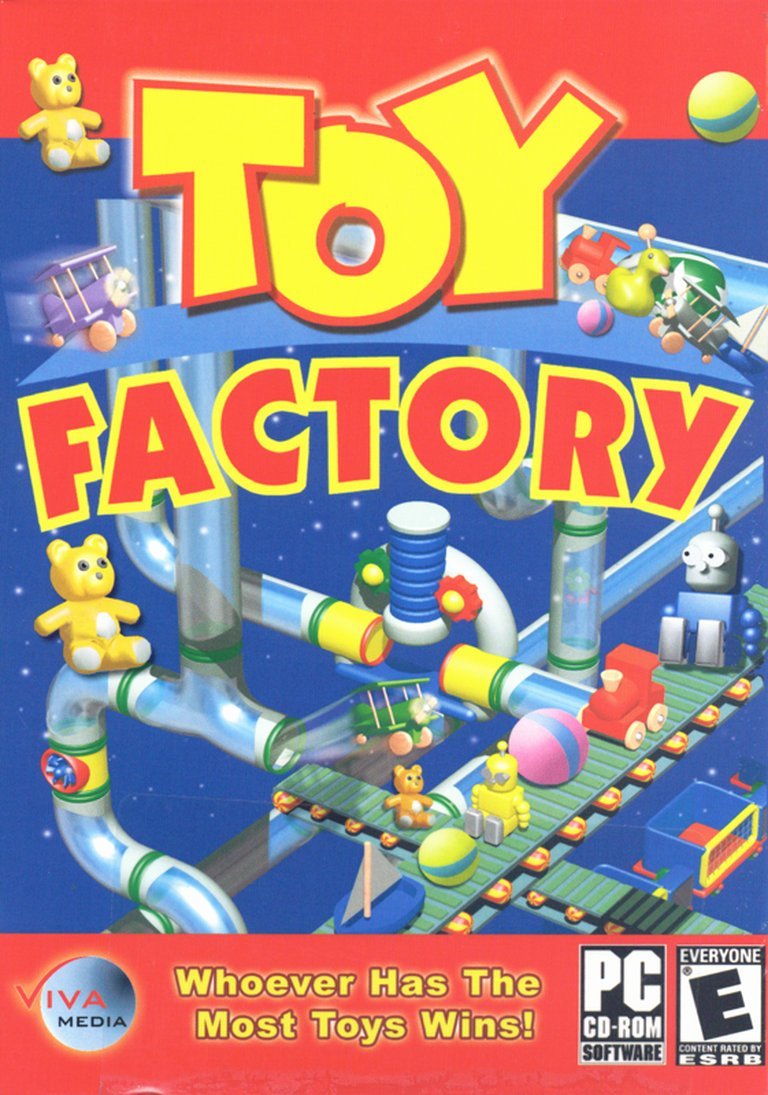- Release Year: 2004
- Platforms: Windows
- Publisher: Novitas Publishing GmbH
- Developer: FAKT Software GmbH
- Genre: Action, Puzzle
- Perspective: Side view
- Game Mode: Single-player
- Gameplay: Conveyor belt mechanics, Level editor, Puzzle-solving
- Setting: Toy factory
- Average Score: 67/100

Description
Toy Factory is a puzzle game where players manage a toy production line by directing toys through conveyor belts and machinery to the correct bins. The game features 40 levels of increasing difficulty, allowing players to build, paint, and gift-wrap toys in advanced stages. It includes a campaign mode and a level editor for custom gameplay.
Where to Buy Toy Factory
PC
Toy Factory Free Download
Toy Factory Cracks & Fixes
Toy Factory Guides & Walkthroughs
Toy Factory Reviews & Reception
mobygames.com (41/100): Critics
Average score: 41%
(based on 2 ratings)
steambase.io (94/100): 2D Platformer GAME (Toy Factory)
has earned a
Player Score
of
94 / 100
myabandonware.com : I experienced a bad frame rating while trying this game, don’t run this game unless you want to deal with the bad frame rating!
Toy Factory: Review
Introduction
In the early 2000s, puzzle games were evolving beyond static challenges to embrace real-time gameplay and creative level design tools. Toy Factory emerged as a quirky entry in this genre, combining factory simulation with frantic puzzle solving. This review delves into the legacy of Toy Factory, examining its gameplay innovations, design choices, and lasting impact.
Development History & Context
Toy Factory was developed by FAKT Software GmbH and published by Novitas Publishing GmbH in 2004. The team behind it had experience with other puzzle and simulation games, including the Crazy Machines series. The game was designed for Windows PCs during an era when CD-ROMs were the primary distribution medium and real-time strategy games were defining new standards for interactive gameplay.
Narrative & Thematic Deep Dive
The game’s narrative is light but engaging. Players take on the role ofWilma, who inherits her uncle’s toy factory. The goal is straightforward: guide different toys to their correct bins by manipulating conveyors, switches, and bins. As levels progress, players can build and customize toys, adding depth to the gameplay. The themes of factory management, resource allocation, and time pressure resonate with players who enjoy both puzzle solving and simulation elements.
Gameplay Mechanics & Systems
At its core, Toy Factory is a real-time puzzle game. Players must react quickly to direct toys through a complex network of machinery. Key mechanics include:
– * Bin Manipulation: Moving bins back and forth to catch falling toys.
– * Switch Flipping: Redirecting toys via conveyor belts and tubes.
– * Toy Building: In advanced levels, assembling toys from parts, painting, and wrapping.
– * Level Editor: Allowing players to create and share their own challenges.
The game’s real-time pacing adds urgency, distinguishing it from traditional turn-based puzzle games. The level editor is a highlight, encouraging replayability and community engagement.
World-Building, Art & Sound
The game’s art style employs bright, cartoony visuals with detailed factory environments. Toys like boats, balls, and planes are rendered with charm. The fixed/flip-screen perspective provides a clear view of the action. Music by Patrick Scholze and sound effects by Falk Möckel create an upbeat atmosphere, enhancing the game’s playful nature.
Reception & Legacy
Upon release, Toy Factory received mixed reviews. Critics praised its innovative gameplay but noted issues like a lack of long-term goals and shallow difficulty progression. Despite a lukewarm initial reception, the game’s level editor fostered a dedicated community, and it influenced future titles like Santa’s Toy Factory: Nonograms and the Toy Factory Fixer mobile app.
Conclusion
Toy Factory stands as a unique entry in the puzzle genre, blending real-time action, factory simulation, and creative level design. While it didn’t achieve widespread acclaim, its innovative mechanics and engaging level editor have ensured it retains a niche following. Its influence can be seen in subsequent games that merge puzzle solving with simulation elements, making it a noteworthy chapter in video game history.